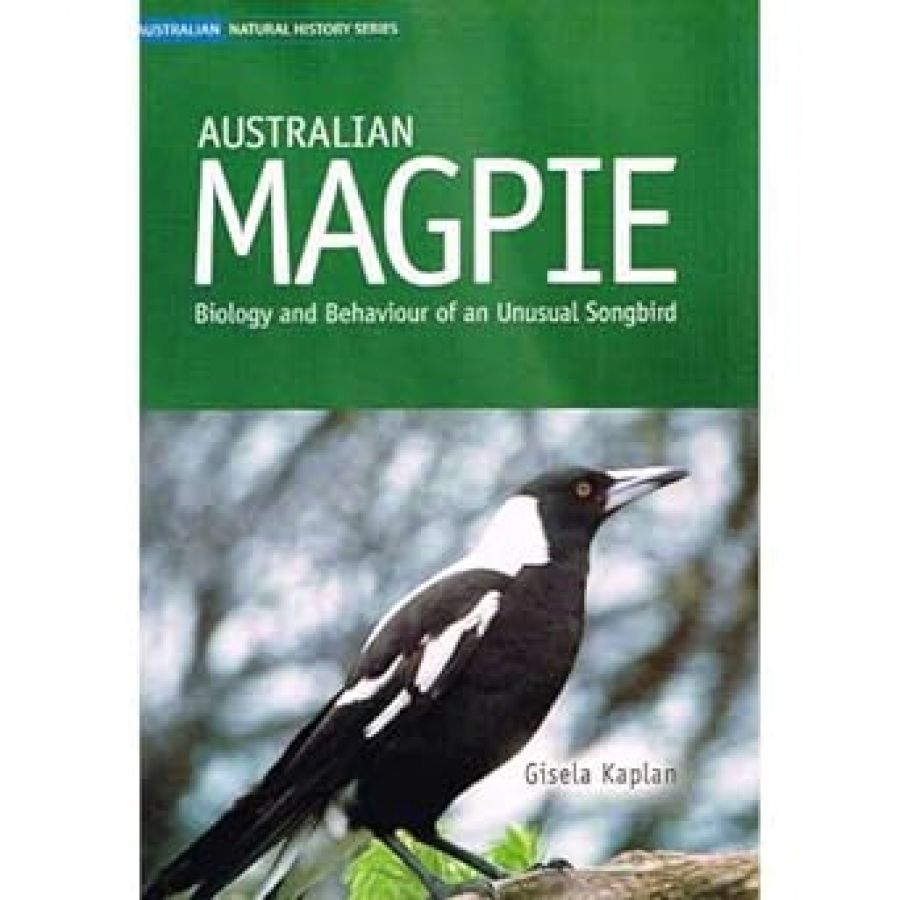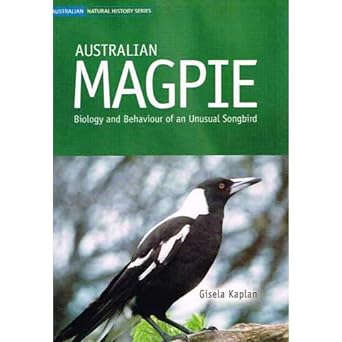
- Free Article: No
- Contents Category: Nature Writing
- Review Article: Yes
- Article Title: Only a Mother Could Love Them
- Online Only: No
- Custom Highlight Text:
In the old days, it was easy. The eagle was a large bird with sharp talons for gripping and a hooked beak for tearing prey; the swallow was a fast-flying bird that left our shores each winter to seek warmer climes. But since Charles Darwin, we can’t say that anymore, because the very language of such descriptions implies purpose – either will (the swallow somehow knowing, planning, its migration) or design.
- Book 1 Title: Australian Magpie
- Book 1 Subtitle: Biology and behaviour of an unusual songbird
- Book 1 Biblio: CSIRO Publishing, $39.95pb, 152pp, 0 643 09068 1
- Book 1 Cover Small (400 x 600):

- Book 1 Cover (800 x 1200):

- Book 2 Title: Kookaburra
- Book 2 Subtitle: King of the bus
- Book 2 Biblio: CSIRO Publishing, $34.95pb, 144pp, 0 643 09063 0
- Book 2 Cover Small (400 x 600):

- Book 2 Cover (800 x 1200):

Now, in the place of the Reverend William Paley’s divine watchmaker, we have Richard Dawkins’s blind watchmaker – natural selection – and scientists must ensure that their language reflects this change. Rephrased in Darwinian language, the eagle is a large bird that has evolved a beak and talons well-suited to a carnivorous diet. The swallow’s innate tendency to fly north for winter is a successful evolutionary adaptation that avoids (not, please note, ‘to avoid’) its experiencing rigorous climatic conditions. Teleological explanations are out, evolutionary explanations are in. And scientists should never, ever, anthropomorphise. But in ordinary speech and writing, we do both all the time. What, then, should a scientist writing for a general readership do? This is one of the dilemmas faced by the writers of two new books on Australian birds.
Professor Gisela Kaplan has spent thousands of hours observing magpies in the wild, mainly around Armidale where she studies animal behaviour at the University of New England and has hand-raised orphan birds. She knows her magpies. And it is fair to say, on the evidence of her book Australian Magpie: Biology and Behaviour of an Unusual Songbird, that Kaplan loves magpies, too.
She reveals them to be long-lived birds that form intricate social relationships with each other. Communal breeding is the rule, where related ‘helpers’ assist the breeding pair in caring for the young and defending the territory. They are peerless songsters. One chapter of the book is devoted to magpie song production, and another to communication, and Kaplan makes a convincing case that their songs can almost be thought of as conversations, conveying detailed information about individuals, groups and the environment (I was delighted that the author was able to confirm something I have myself suspected, that magpies not only duet and carol with each other but can actually harmonise with themselves, singing two notes at once). And magpies have a particularly close relationship with humans.
Almost everybody in Australia has a magpie story. Often it is about being swooped during their breeding season (another researcher, Darryl Jones, believes that most Australians have experienced the swish of wings and snap of beak from a male magpie defending its nest area). But magpies are often fed by humans and even adopted as pets. And their complex behaviour is often remarked upon. Kaplan describes an account of a ‘magpie court’, in which ten or twenty birds formed a semicircle around one individual, which made no attempt to escape. Each stepped forward, gave the ‘defendant’ a sharp peck, then stepped back to allow the next to repeat the ‘punishment’. Session over, they all flew off, leaving the pecked and penitent individual behind. How, I wonder, would a Darwinist explain this?
If the magpie wins the vote for Australia’s favourite bird, a close second is the laughing kookaburra, the main subject of Sarah Legge’s book Kookaburra: King of the Bush. The laughing kookaburra (just plain ‘kookaburra’ to most of us, but Legge distinguishes it from the blue-winged kookaburra of northern Australia and from two smaller species from New Guinea) is also a long-lived, gregarious bird with a distinctive voice.
Legge begins her book with a useful chapter on the place of the bird in the past and present culture of Australia: its place in Aboriginal mythologies and its early (and overrated) reputation among white settlers as a useful snake killer. Then on to the science. With DNA analysis and miniature surveillance cameras inside nest hollows, Legge and her colleagues have discovered much about kookaburra life. The ratio of male eggs to female in any brood varies under different conditions (in un-Darwinian terminology, females can ‘choose’ the sex of their eggs). Despite their sociable behaviour as adults, among young nestlings siblicide is common – almost always of the youngest chick in the nest that is pecked to death by its brothers or sisters. And the size of a breeding group is no good indication of its success (though male helpers seem to do a better job than females).
Both books are in the ‘all you ever wanted to know about’ category, but are they a good read? As a lapsed Darwinist, I prefer Legge’s style. If she wants to anthropomorphise their behaviour, with ‘gormless’ youngsters and ‘loafing’ adults living ‘happy and fulfilling kookaburra lives’, that’s fine by me. After seeing the excellent photographs of half-fledged nestlings, I know what she means when she says that, at this stage, ‘only their mother could love them’. Kaplan is a little more BC – ‘biologically correct’ – but her information is sound and her presentation clear. In their own ways, both authors successfully combine scientific accuracy and good writing.


Comments powered by CComment